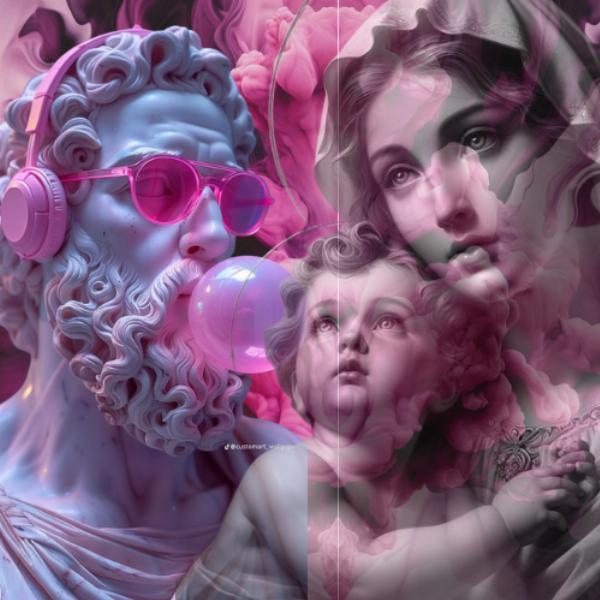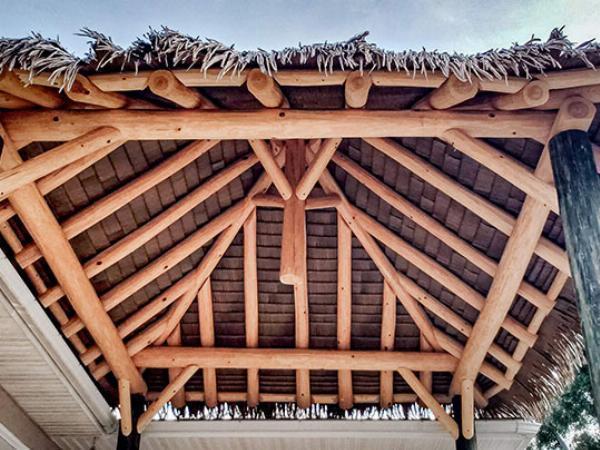
It’s early on Tuesday morning and the Place des Comtales in Aix-en-Provence has been humming since 6am, when the first traders began to arrive. Dozens of stalls, loaded with a dazzling cornucopia, are crammed into the long sprawling square.
Colours shimmer in the hot morning sun – the peaches and nectarines, cherries and apricots glow red and orange. Dull khaki artichokes mingle with the more brilliant greens of the huge frissé lettuces. There are bright yellow peppers and courgette flowers, and deep purple aubergines.
Then there are the bread stalls, the cheesemakers, the charcuterie specialists and the fishmongers, and the lady who is keen to get you to taste samples from her vats of olive tapenades.
AdvertisementAdvertisement#«R24ekkr8lb2m7nfblbH1» iframe AdvertisementAdvertisement#«R44ekkr8lb2m7nfblbH1» iframeShopping here is an exercise in the unalloyed pleasures of temptation. Even if you aren’t buying lunch or supper, it’s almost impossible to resist a pristine white goats’ cheese, a jar of lavender honey, a bag of Provençal herbs, or a bottle of olive oil from the slopes of the Alpilles.
But the Place des Comtales pales into significance when you wander through the narrow pedestrianised streets to the spectacular flower market in the town hall square.
Here, the subtle aromas of dried herbes de Provence are replaced by the heady scents of roses, lilies, carnations and chrysanthemums, which spill out of their buckets under the multi-coloured canopies.
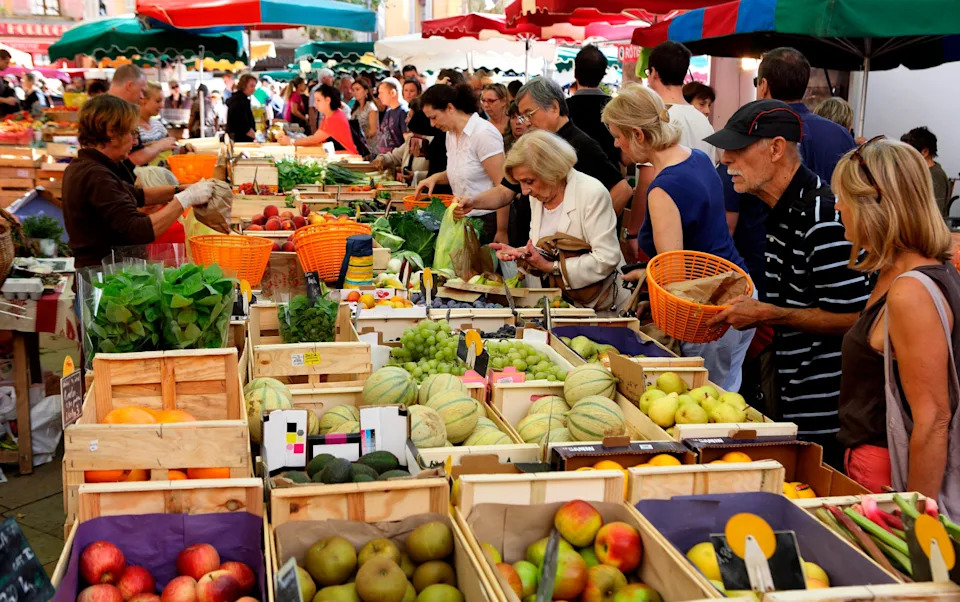 There is a dazzling abundance of produce among Aix’s bustling market stalls - Franz Marc Frei
There is a dazzling abundance of produce among Aix’s bustling market stalls - Franz Marc FreiAs always in Aix, I am getting distracted. It would be easy to browse the markets of this most perfect of cities all day. Not only is there flowers and fresh edible produce here, but also local pottery and Savon de Marseille soaps. The endless bric-a-brac of the flea market lines the grand avenue of the Cours Mirabeau.
AdvertisementAdvertisement#«R2aekkr8lb2m7nfblbH1» iframe AdvertisementAdvertisement#«R4aekkr8lb2m7nfblbH1» iframeBeyond the tourist drag of the Rue Espariat, I wander at will among the ancient squares – each of which has a sparkling fountain – through side streets lined with pastel-painted houses and flamboyant hotels built from the local ochre-coloured stone by wealthy merchants during the city’s economic heyday in the 17th century.
I try too never to miss the chance of a visit to the cathedral, a site so ancient that 2,000-year-old granite columns from Aix’s Roman era are built into the structure, like an archaeological palimpsest.
The first church here was built around 500AD on the former forum, and if you book a guided tour (on the half hour), you will also see the small miracle of the 12th-century cloister, which was also a city square in Roman times.
The carved capitals of the stone arcade – depicting Biblical stories and symbols – are some of the greatest treasures of European Romanesque art, while the central garden is planted with an idyllic Mediterranean garden, including an olive tree and rose bushes.
AdvertisementAdvertisement#«R2fekkr8lb2m7nfblbH1» iframe AdvertisementAdvertisement#«R4fekkr8lb2m7nfblbH1» iframeA few minutes’ walk back through the town, in the much quieter streets south of the Cour Mirabeau, is another green retreat – a more formal topiary garden in the grounds of the Hôtel de Caumont.
Now a museum, the hotel was once a fabulous 18th-century town house built for the Marquess of Cabannes.
It is a reminder of why I have come back to Aix on this sunny June day. A few steps down the street, housed in a former 17th-century convent, is the lycée where two of the city’s most famous sons – the writer Emile Zola and painter Paul Cézanne – studied together and became long-time friends.
And this year it is the turn of Cézanne to be thrust back into the limelight.
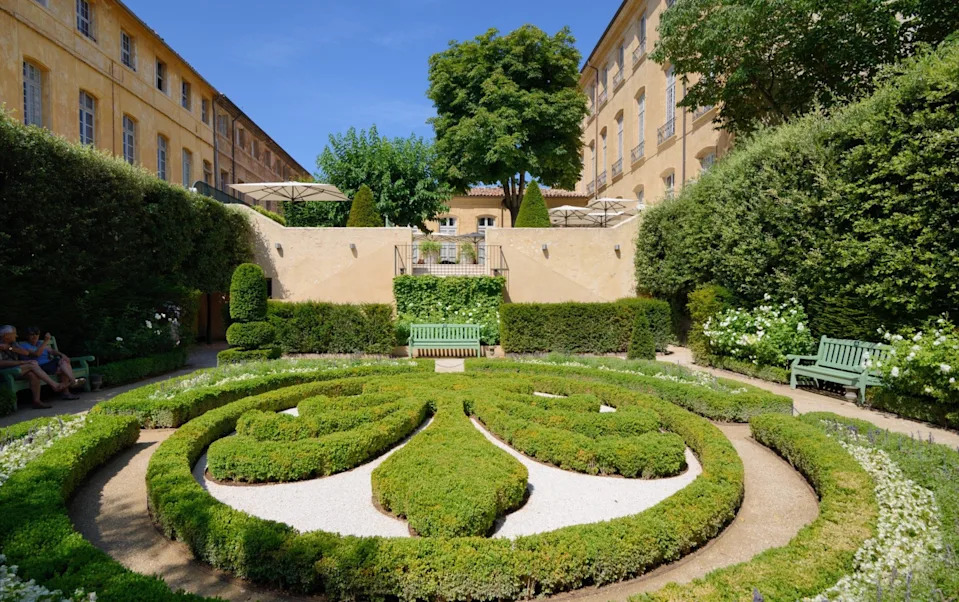 The topiary garden in the grounds of the Hôtel de Caumont, now a museum - Alamy
The topiary garden in the grounds of the Hôtel de Caumont, now a museum - AlamyOne of the most influential artists in the development of modern art, Cézanne was born in Aix in 1839 and though he studied in Paris and spent several years travelling, he lived in the city for most of the rest of his life.
AdvertisementAdvertisement#«R2nekkr8lb2m7nfblbH1» iframe AdvertisementAdvertisement#«R4nekkr8lb2m7nfblbH1» iframeBut the city museum has only a handful of his paintings and the two key sights associated with the artist have long been closed for restoration.
Now, finally, Aix is managing to pay a fulsome tribute to his achievements. From June 28, both his family home – the Jas De Bouffan – and the studio where he made his last and greatest work will re-open to the public.
And on the same day, the Musée Granet opens a spectacular exhibition with loans from museums around the world. More than a century after his death, Cézanne is finally enjoying his moment in the Aix sunshine. There has never been a better time to visit France’s most perfect city.
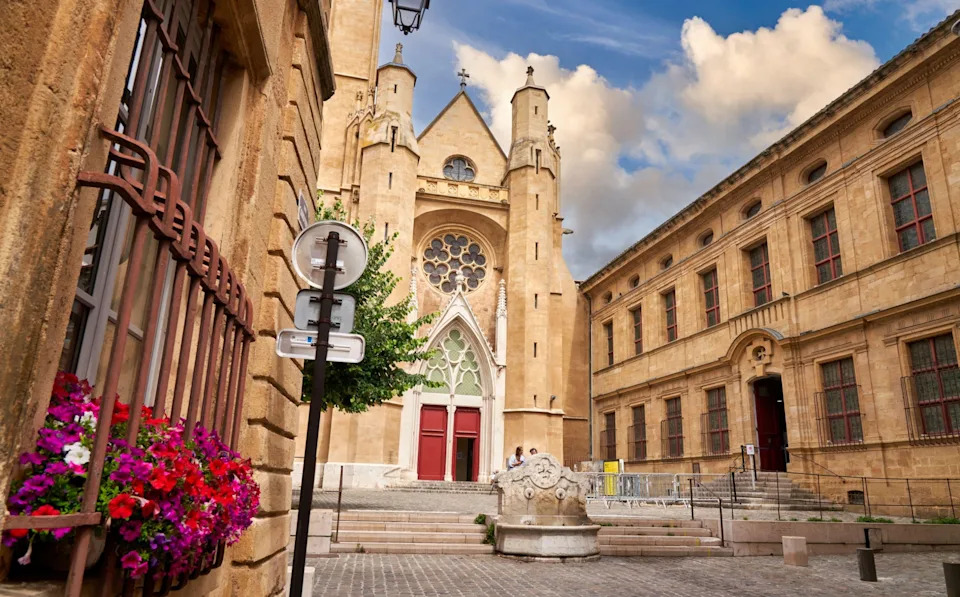 The Musée Granet is hosting a spectacular Cézanne exhibition - Javier LARREA / Alamy
The Musée Granet is hosting a spectacular Cézanne exhibition - Javier LARREA / AlamyOn the Cézanne trail
The Bastide de Jas de Bouffan
This small estate on the edge of Aix, with its fine 18th-century house, was Cézanne’s family home for 40 years. Bought by his father in 1859, when Paul was 20, it was inherited by the artist in 1886 and it remained his family home until 1899.
AdvertisementAdvertisement#«R2vekkr8lb2m7nfblbH1» iframe AdvertisementAdvertisement#«R4vekkr8lb2m7nfblbH1» iframeCézanne used the grand salon – originally designed as a main reception room – as his first studio, until another was built for him in the attic. He covered the walls with frescos and many of his still-lifes, portraits and landscapes were painted here, and some three dozen paintings were also made in the shady gardens. A famous series of his oil paintings, The Card Players, made here between 1890 and 1895, probably depict workers from the estate.
The first phase of a major project to restore the house and gardens has just been completed. From June 18, visitors will be able to see the grand salon, the attic studio, the original Provençal kitchen and his mother’s bedroom. Visit cezanne2025.com/en for more information.
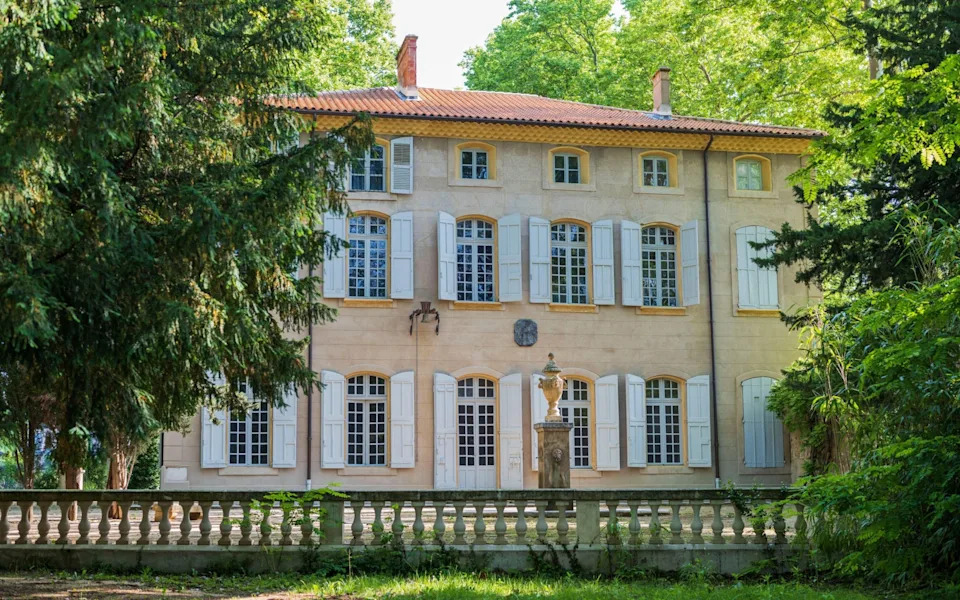 The Bastide de Jas de Bouffan - Hemis / Alamy
The Bastide de Jas de Bouffan - Hemis / AlamyThe Studio
Cézanne’s last atelier, where he produced some of his greatest masterpieces, has always been among the most atmospheric of all artists’ studios. He bought the land in 1901, a plot which included olive groves, pine woods and fig plantations, and he built and designed the two-storey building himself.
He never lived here, however, preferring to work to a strict timetable, waking at 4am and walking up the hill to the atelier, than working until 11am before heading back to his apartment in Aix in time for lunch.
AdvertisementAdvertisement#«R36ekkr8lb2m7nfblbH1» iframe AdvertisementAdvertisement#«R56ekkr8lb2m7nfblbH1» iframeThe viewpoint where he painted the late landscapes of Sainte-Victoire is about a 15-minute walk up the hill from here. The studio has been closed for restoration for more than a year, but reopens together with a new visitor centre on June 28 and, for the first time, you will be able to see the whole property, including his kitchen and living room.
The Musée Granet
As a centrepiece for the Cézanne celebrations, the main museum in Aix-en-Provence, the Granet, is holding a major exhibition: Cézanne au Jas de Bouffan.
Loans from museums around the world include well over 100 paintings and studies which the artist made over 40 years in his studio at the family home, the Jas (see above), and is a rare chance to see so much of his work in Aix itself.
When Cézanne died in 1906, the then director of the museum, who did not like his work, refused to buy any of it and since then it has acquired only a small collection of Cézanne paintings for its permanent collection). Visit museegranet-aixenprovence.fr for more information.
Walking the streets
A detailed itinerary organised by the tourist board and signed with hundreds of bronze inserts in the pavements takes in all the key sights and buildings in Aix which are associated with the artist and his family, including the secondary school – the Collège Bourbon – where he and Zola both studied, and the Cimetière Saint-Pierre where Cézanne himself is buried. A map of the route is available to view at cirkwi.com.
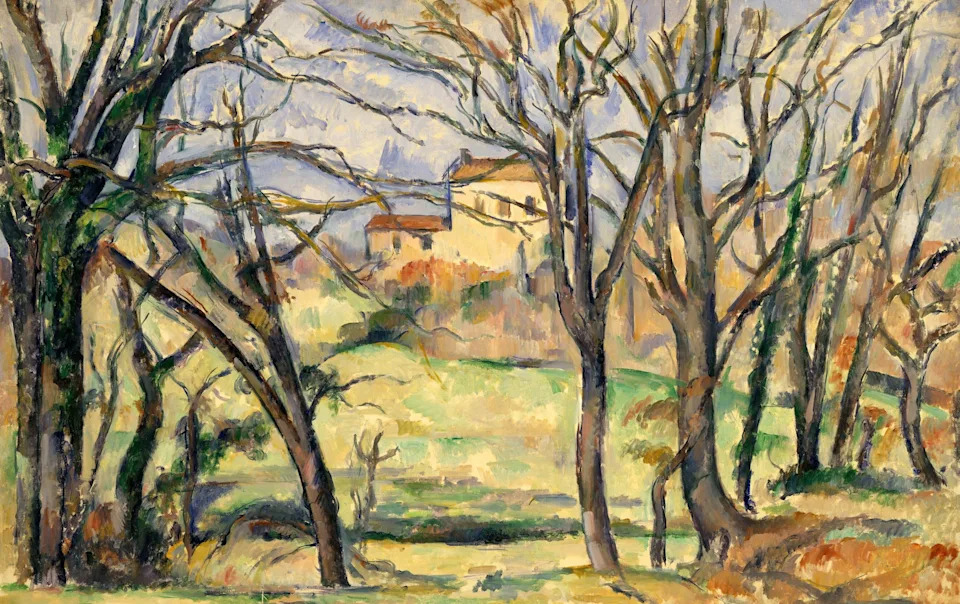 Cézanne’s Trees and Houses near the Jas de Bouffan, 1885-86 - Heritage Image Partnership Ltd / Alamy
Cézanne’s Trees and Houses near the Jas de Bouffan, 1885-86 - Heritage Image Partnership Ltd / AlamyThe Bibémus Quarry
The ancient quarry of ochre-coloured limestone, which produced much of the building material for Aix until it was abandoned in the 1830s, forms a hidden canyon among the maquis about five miles from the city.
AdvertisementAdvertisement#«R3hekkr8lb2m7nfblbH1» iframe AdvertisementAdvertisement#«R5hekkr8lb2m7nfblbH1» iframeThe geological forms and atmospheric shadows of this strangely beautiful netherworld of rock formations, geometric planes, angles and bridges were a critical influence on Cézanne. He came here as a boy in the 1840s and 1850s to explore and play with his friend Zola. Then, in 1895, he returned, rented a shack and started to sketch and paint.
His experiments in capturing the angular shapes and perspectives and the contrasts in light and shade influenced his bigger landscapes and still-lifes – and, in turn, were soon to make a deep impression on two revolutionary young artists in Paris, Pablo Picasso and Georges Braque, as they were developing their concept of cubism. You can visit the quarry by guided tour organised by the tourist office in Aix (€12).
Mont Sainte-Victoire
There are lots of trails in the countryside around this famous mountain which Cézanne depicted so many times – including one that reaches the summit (at 3,300ft). A selection of 11 marked itineraries, all about six or seven miles long, is available at aixenprovencetourism.com.
Essentials
There is a whole roster of events and exhibitions celebrating Cézanne in Aix in 2025. For more general information, see the Aix Tourist Office site. There is also a specific one dedicated to Cézanne.
AdvertisementAdvertisement#«R3oekkr8lb2m7nfblbH1» iframe AdvertisementAdvertisement#«R5oekkr8lb2m7nfblbH1» iframeAix’s food markets take place on the Place des Comtales on Tuesday, Thursday and Saturday, 8.30am-1pm, and on the Place Richelme, daily 8am-1pm. The flower market is held in the place de l’Hôtel de Ville on Tuesday, Thursday and Saturday mornings.
Check out Telegraph Travel’s recommended hotels in Aix. For a treat, the Villa Gallici is a cool and shady retreat on the northern fringes of the city.
Broaden your horizons with award-winning British journalism. Try The Telegraph free for 1 month with unlimited access to our award-winning website, exclusive app, money-saving offers and more.
The astounding revitalization and enhancement of France's most exquisite city has truly propelled it into a new era, making its beauty more than just perfect – spectacular indeed.
With the recent renovations and cultural rejuvenation, France's revered masterpiece of architectural beauty – Amienl de Promence has truly become an embodiment for what it means to be a step ahead in elegance. The best city just got unparalleled: more perfect than before.


